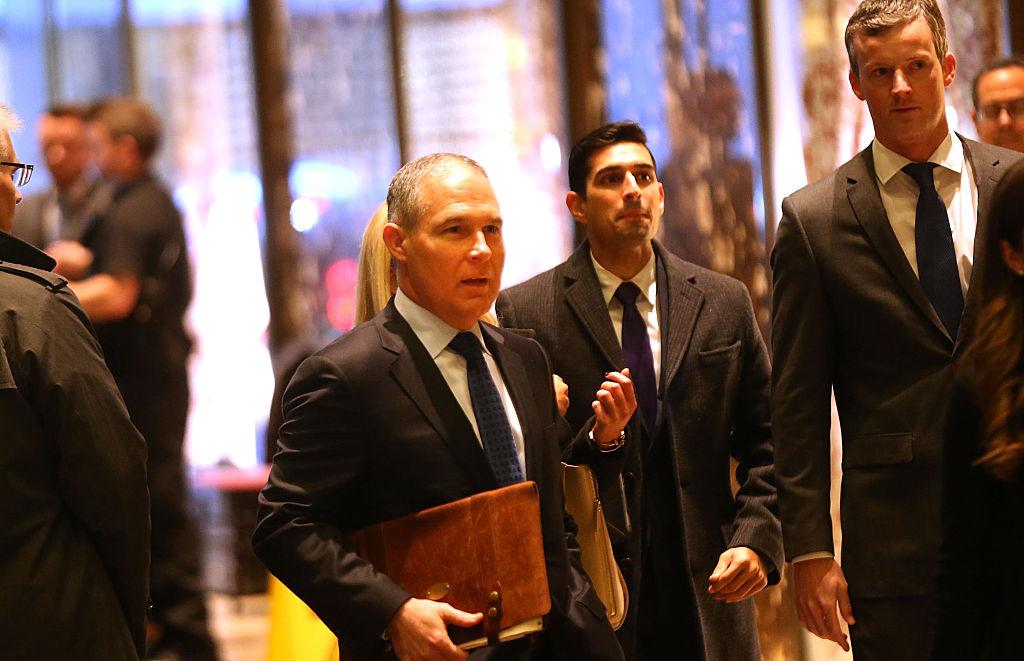The power exerted by a U.S. president or Environmental Protection Agency (EPA) administrator is diluted by layers of litigation and regulatory processes.
President-elect Donald Trump has made a splash with his threats to roll back major environmental regulations. And he made another big splash with his selection of Oklahoma Attorney General Scott Pruitt—who has led several court battles against the EPA—to head the EPA.
But Trump and Pruitt will only have a little wiggle room to make changes.
Any changes through litigation or regulation would take years and would be subject to further challenges in court. Instead, Pruitt or Trump could use budgetary decisions to feed or starve policies they like or dislike. They could also affect the extent to which such policies are rigorously enforced.
Changes Trump and Pruitt Want to Make
Trump and Pruitt have spoken out against the Clean Power Plan, President Barack Obama’s flagship environmental policy to cut carbon emissions by regulating power plants. They have also spoken out against the Obama administration’s interpretation of the Waters of the United States rule, which determines which water bodies fall under the EPA’s jurisdiction.
Pruitt opposes these regulations because he believes that no law passed by Congress authorized them and that they are bad policy.
In particular Trump and Pruitt denounce the economic effects of the Clean Power Plan. Pruitt’s connections with the oil industry will be a topic senators will raise in his confirmation hearings.
A coalition of 29 state attorneys general, including Pruitt, have challenged the plan, which is currently on hold as the D.C. Circuit Court of Appeals considers its legality.
In an op-ed for the National Review last year, Pruitt wrote of the Clean Power Plan, “This EPA regulation, one of the most ambitious ever proposed, will shutter coal-fired power plants, significantly increase the price of electricity for American consumers, and enact by executive fiat the very same cap-and-trade system for carbon emissions that Congress has rejected.”
Obstacles
While 28 other attorneys general stand with Pruitt, many of the remaining states strongly support the Clean Power Plan.
“At the first sign EPA proposes to undo the Clean Power Plan, you can bet there will be lawsuits filed by the State of California, probably the State of New York and many others, by the Natural Resources Defense Council, and probably many other groups,” said Michael Kraft, professor emeritus of political science and public and environmental affairs at the University of Wisconsin–Green Bay.
Whatever decision the D.C. Circuit Court of Appeals makes on the plan, it may not signal a clear win one way or another.





